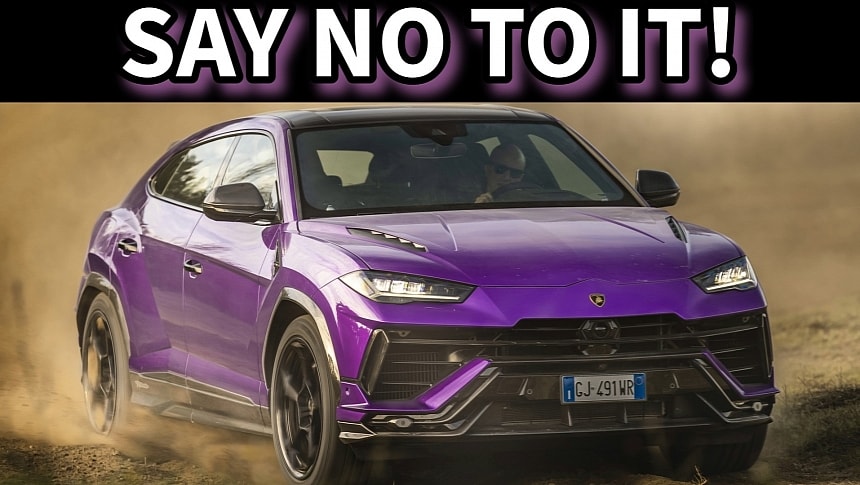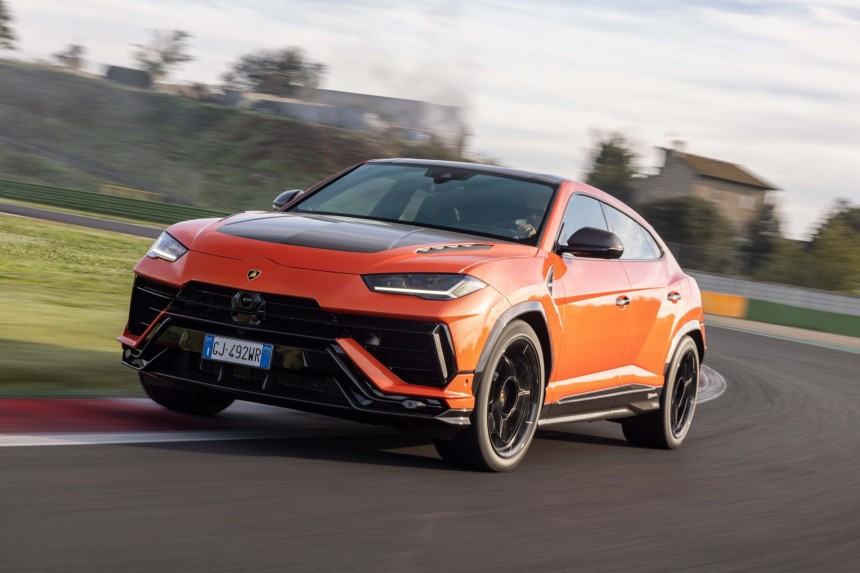Like most of you, fellow gearheads, I've always been the go-to person for my close ones whenever they wanted to buy a new car. And since most of the time, I made fun of the rides they had their eyes on, I've decided to do something about it. The pen (or the keyboard, in this case) is mightier than the sword, so let the hate begin with a new series in no particular order, yet with a clear model in sight: the Lamborghini Urus.
I've always been a fan of the Italian supercar maker and still find models such as the Miura and Countach dreamy. I can say the same about the Diablo that followed it and its facelifted iteration after Audi acquired Lamborghini in 1998. The Murcielago and Aventador are real dream machines, just like the latest Revuelto plug-in hybrid and the V10 series comprising the Gallardo and Huracan, as well as every special edition, one-off, and few-off models based on them.
The LM002 from the late '80s and early '90s is still a quirky and appealing ride, especially since it packs the same V12 firepower as the era's Countach. But in its never-ending chase of reaching out to a completely new audience, albeit while retaining the blue bloodiness of its cars, Lamborghini decided to introduce a crossover. Considered the spiritual successor to the iconic Rambo Lambo (LM002), it was previewed by a concept in 2012, and five years later, production started at the Sant'Agata Bolognese factory.
It's none other than the Urus, an exotic high-rider that tries too much to look like a Lamborghini. It's far from being the prettiest in its class, but at least it has become an icon, and it is a critical product for the Italian company, as it has more than doubled its annual sales since its introduction. This proves that the usual clientele only cares about the logo on the steering wheel, as beneath the skin, the Lamborghini Urus utilizes the Volkswagen Group's MLB Evo platform. You know, the same one underpinning the VW Touareg and every other similarly-sized crossover made under its roof, from the Audi Q7 and Q8 to the Porsche Cayenne and Bentley Bentayga.
Kudos to the automaker for making its clientele believe the Urus is a real Lambo when it shares most nuts and bolts with the Touareg, which starts at €69,200 (almost $75,000) in its home market. A new Urus would set you back roughly four times as much. In exchange, you'd get a very fast ride that features controversial looks and will always lose the track battle against a slightly less powerful supercar. It's all about physics in the end, and the generous ground clearance doesn't work in its favor here. And it's not exactly an off-roader disguised as a mall crawler, either.
As we already told you, it uses the same construction as the VW Group's large crossovers, and it's no body-on-frame one. The clever electronics combined with the right tires might help it cope with snow, sand, and so on, but in the end, it won't be able to keep up with a Suzuki Jimny off the beaten path. The large size (for Europe, anyway) means that finding a parking spot in the urban jungle could turn out to be very tricky, and it's not like it aces the hauling part compared to a similarly-sized station wagon. Or, better yet, a super estate, something along the lines of the Audi RS 6 Avant, which, guess what, is also based on the MLB Evo and costs half as much.
In theory, the Lamborghini Urus desperately tries to be a jack of all trades, but it is the master of none. There are quicker crossovers out there, it's not that agile on a twisty road, it cannot cope with arduous tracks, and it's not a great daily. On top of that, it costs a lot of money, and there are far better alternatives that are less pricey and do some jobs better than the Italian brand's exotic high-rider.
BMW's X5 M Competition, for one, looks way better, and it is a hair slower than the Urus. It is also some €100,000 (nearly $110,000) cheaper in Germany, and for that difference, you could also get a new Porsche 718 Boxster GTS. Thus, you'd have not one but two fast rides instead of a single Urus that comes with the obvious high maintenance, despite sharing many things with the Touareg. But then again, it is the Lambo that turns heads on the road rather than high-end BMW, Mercedes, Audi, Porsche, and so on, and as we mentioned above, most owners only care about the Raging Bull logo.
Let's say you had almost $300,000 to blow on a set of wheels. Would you really get a Lamborghini Urus? I obviously wouldn't, as it would probably be the Mercedes-AMG G 63 that would get my money. That one, and perhaps a next-gen Ford Mustang Shelby GT500, assuming it would cost less than $100k when it launches, presumably around a year from today.
The LM002 from the late '80s and early '90s is still a quirky and appealing ride, especially since it packs the same V12 firepower as the era's Countach. But in its never-ending chase of reaching out to a completely new audience, albeit while retaining the blue bloodiness of its cars, Lamborghini decided to introduce a crossover. Considered the spiritual successor to the iconic Rambo Lambo (LM002), it was previewed by a concept in 2012, and five years later, production started at the Sant'Agata Bolognese factory.
It's none other than the Urus, an exotic high-rider that tries too much to look like a Lamborghini. It's far from being the prettiest in its class, but at least it has become an icon, and it is a critical product for the Italian company, as it has more than doubled its annual sales since its introduction. This proves that the usual clientele only cares about the logo on the steering wheel, as beneath the skin, the Lamborghini Urus utilizes the Volkswagen Group's MLB Evo platform. You know, the same one underpinning the VW Touareg and every other similarly-sized crossover made under its roof, from the Audi Q7 and Q8 to the Porsche Cayenne and Bentley Bentayga.
Kudos to the automaker for making its clientele believe the Urus is a real Lambo when it shares most nuts and bolts with the Touareg, which starts at €69,200 (almost $75,000) in its home market. A new Urus would set you back roughly four times as much. In exchange, you'd get a very fast ride that features controversial looks and will always lose the track battle against a slightly less powerful supercar. It's all about physics in the end, and the generous ground clearance doesn't work in its favor here. And it's not exactly an off-roader disguised as a mall crawler, either.
In theory, the Lamborghini Urus desperately tries to be a jack of all trades, but it is the master of none. There are quicker crossovers out there, it's not that agile on a twisty road, it cannot cope with arduous tracks, and it's not a great daily. On top of that, it costs a lot of money, and there are far better alternatives that are less pricey and do some jobs better than the Italian brand's exotic high-rider.
BMW's X5 M Competition, for one, looks way better, and it is a hair slower than the Urus. It is also some €100,000 (nearly $110,000) cheaper in Germany, and for that difference, you could also get a new Porsche 718 Boxster GTS. Thus, you'd have not one but two fast rides instead of a single Urus that comes with the obvious high maintenance, despite sharing many things with the Touareg. But then again, it is the Lambo that turns heads on the road rather than high-end BMW, Mercedes, Audi, Porsche, and so on, and as we mentioned above, most owners only care about the Raging Bull logo.
Let's say you had almost $300,000 to blow on a set of wheels. Would you really get a Lamborghini Urus? I obviously wouldn't, as it would probably be the Mercedes-AMG G 63 that would get my money. That one, and perhaps a next-gen Ford Mustang Shelby GT500, assuming it would cost less than $100k when it launches, presumably around a year from today.













